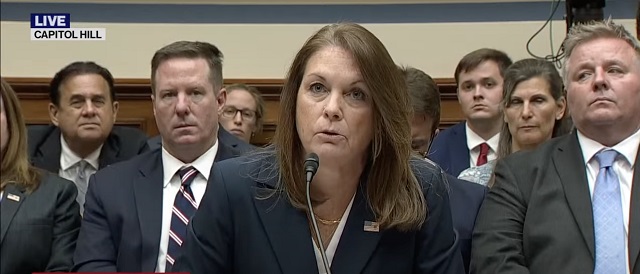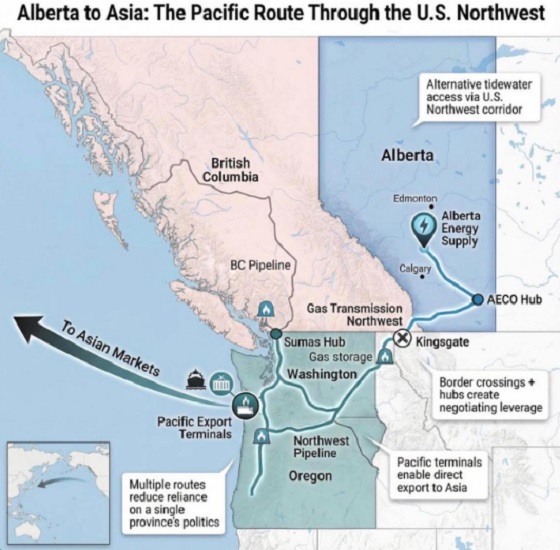International
Few Americans Trust The Secret Service To Protect Presidential Candidates After Trump Shooting: POLL

 From the Daily Caller News Foundation
From the Daily Caller News Foundation
Few Americans trust the United States Secret Service to keep presidential candidates safe before the November election, according to a Associated Press-NORC Center for Public Affairs Research poll released Friday.
Only about three out of ten Americans say they are “extremely” or “very confident” that “the Secret Service can keep presidential candidates safe from violence before the election,” according to the AP-NORC poll. U.S Secret Service director Kimberly Cheatle resigned from her position on July 23 following an evasive testimony before Congress about the attempted assassination of former President Donald Trump on July 13 in Butler, Pennsylvania.
Republicans and Independents were more concerned with the U.S. Secret Service’s abilities than Democrats, with only 22% of Republicans and 21% of Independents being “extremely” or “very confident” the agency can protect candidates, according to the poll. Forty-three percent of Democrats held the same opinion.
Only 36% of Americans are “extremely/very confident” that the U.S. Department of Homeland Security “will conduct a full and fair investigation” into the attempt on Trump’s life, according to the poll. Democrats were more confident than Republicans, polling at 52% and 21%, respectively.
Most Americans blame the “political division in the U.S.” for the assassination attempt, with 78% of respondents saying it contributed a “great deal or a moderate amount”, according to the poll. The Secret Service was the second-most blamed, with 72% of respondents agreeing they were responsible.
Democrats were more likely to blame “the availability of guns,” with 81% responding as such, according to the poll. Only 34% of Republicans and 52% of Independents blamed guns for the shooting.
Cheatle was replaced by Acting Secret Service Director Ronald Rowe as questions continue to circulate as to the security failures of the Secret Service that day. Thomas Matthew Crooks, 20, opened fire with a AR-15 pattern rifle on Trump during his rally, killing Corey Comperatore, 50, and injuring two others.
The poll was conducted using the Amerispeak Panel from NORC at the University of Chicago. The poll sampled 1,143 adults from July 25 to July 29with a margin for error of 4.1%.
The Secret Service did not immediately respond to the Daily Caller News Foundation’s request for comment.
Featured Image Credit: Screenshot/YouTube/ABC News
International
$2.6 million raised for man who wrestled shotgun from Bondi Beach terrorist

More than $2.6 million has been raised for a suburban Sydney shop owner who put himself directly in the line of fire to stop a terrorist during last Sunday’s attack at Bondi Beach, a moment of raw courage that has resonated far beyond Australia’s shores.
The GoFundMe campaign for Ahmed al Ahmed surpassed the $2.6 million mark by Sunday morning, fueled by more than 45,000 donations after video of his actions spread rapidly online. The footage shows Ahmed charging one of the attackers, tackling him to the ground, wrenching a shotgun from his hands, and turning the weapon back on the would-be killer to prevent further carnage.
Ahmed, you are an Australian hero.
You put yourself at risk to save others, running towards danger on Bondi Beach and disarming a terrorist.
In the worst of times, we see the best of Australians. And that's exactly what we saw on Sunday night.
On behalf of every Australian, I… pic.twitter.com/mAoObU3TZD
— Anthony Albanese (@AlboMP) December 16, 2025
Ahmed, 44, is a father of two young daughters, ages five and six, and owns a small shop in suburban Sydney. His intervention came at a brutal cost. As he fought to disarm the first attacker, a second terrorist opened fire on him, shooting him multiple times in an effort to stop him from taking control of the gun. Ahmed survived, but only narrowly.

The overwhelming financial support has turned Ahmed into an unlikely national figure — not because he sought attention, but because he acted when others couldn’t. The outpouring of donations has unfolded alongside growing public anger toward Prime Minister Anthony Albanese’s government, which has faced mounting criticism over its handling of rising antisemitic violence across Australia in the wake of recent terror incidents.
For many Australians, the contrast has been impossible to miss: ordinary citizens stepping up with courage and clarity while political leaders scramble after the fact. Ahmed didn’t wait for instructions or statements. He saw a threat, moved toward it, and stopped it — and millions of people around the world have now responded in kind.
Business
Some Of The Wackiest Things Featured In Rand Paul’s New Report Alleging $1,639,135,969,608 In Gov’t Waste


From the Daily Caller News Foundation
Republican Kentucky Sen. Rand Paul released the latest edition of his annual “Festivus” report Tuesday detailing over $1 trillion in alleged wasteful spending in the U.S. government throughout 2025.
The newly released report found an estimated $1,639,135,969,608 total in government waste over the past year. Paul, a prominent fiscal hawk who serves as the chairman of the Senate Homeland Security and Governmental Affairs Committee, said in a statement that “no matter how much taxpayer money Washington burns through, politicians can’t help but demand more.”
“Fiscal responsibility may not be the most crowded road, but it’s one I’ve walked year after year — and this holiday season will be no different,” Paul continued. “So, before we get to the Feats of Strength, it’s time for my Airing of (Spending) Grievances.”
Dear Readers:
As a nonprofit, we are dependent on the generosity of our readers.
Please consider making a small donation of any amount here.
Thank you!
The 2025 “Festivus” report highlighted a spate of instances of wasteful spending from the federal government, including the Department of Health and Human Services (HHS) spent $1.5 million on an “innovative multilevel strategy” to reduce drug use in “Latinx” communities through celebrity influencer campaigns, and also dished out $1.9 million on a “hybrid mobile phone family intervention” aiming to reduce childhood obesity among Latino families living in Los Angeles County.
The report also mentions that HHS spent more than $40 million on influencers to promote getting vaccinated against COVID-19 for racial and ethnic minority groups.
The State Department doled out $244,252 to Stand for Peace in Islamabad to produce a television cartoon series that teaches children in Pakistan how to combat climate change and also spent $1.5 million to promote American films, television shows and video games abroad, according to the report.
The Department of Veterans Affairs (VA) spent more than $1,079,360 teaching teenage ferrets to binge drink alcohol this year, according to Paul’s report.
The report found that the National Science Foundation (NSF) shelled out $497,200 on a “Video Game Challenge” for kids. The NSF and other federal agencies also paid $14,643,280 to make monkeys play a video game in the style of the “Price Is Right,” the report states.
Paul’s 2024 “Festivus” report similarly featured several instances of wasteful federal government spending, such as a Las Vegas pickleball complex and a cabaret show on ice.
The Trump administration has been attempting to uproot wasteful government spending and reduce the federal workforce this year. The administration’s cuts have shrunk the federal workforce to the smallest level in more than a decade, according to recent economic data.
Festivus is a humorous holiday observed annually on Dec. 23, dating back to a popular 1997 episode of the sitcom “Seinfeld.” Observance of the holiday notably includes an “airing of grievances,” per the “Seinfeld” episode of its origin.
-

 Agriculture2 days ago
Agriculture2 days agoEnd Supply Management—For the Sake of Canadian Consumers
-

 International20 hours ago
International20 hours agoGeorgia county admits illegally certifying 315k ballots in 2020 presidential election
-

 Energy10 hours ago
Energy10 hours ago‘The electric story is over’
-

 Business2 days ago
Business2 days agoJudge Declares Mistrial in Landmark New York PRC Foreign-Agent Case
-

 Alberta23 hours ago
Alberta23 hours agoWhat are the odds of a pipeline through the American Pacific Northwest
-

 International20 hours ago
International20 hours agoCommunist China arrests hundreds of Christians just days before Christmas
-

 Alberta2 days ago
Alberta2 days agoAlberta Next Panel calls to reform how Canada works
-

 Environment2 days ago
Environment2 days agoCanada’s river water quality strong overall although some localized issues persist









